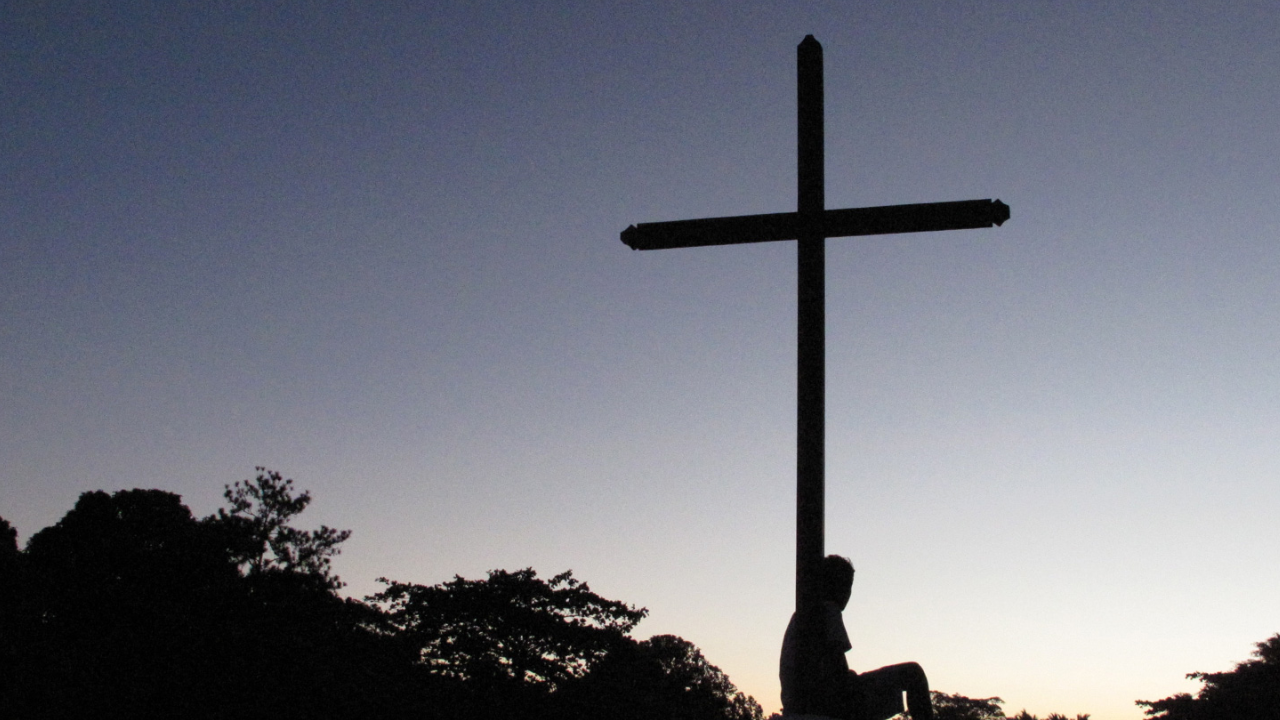
While the vivid characters of Gideon and Samson are commonplace in children’s Bibles and inspirational sermons, the book of Judges also contains other stories we are often less likely to discuss.
The story of the Levite and his concubine, for example, or the Benjamites and their wives—these passages leave us at times questioning their place in holy writ.
But the final verse of the book of Judges provides an explanation for these peculiar and troubling stories, I believe.
Judges 21:25 (ESV) says, “In those days there was no king in Israel. Everyone did what was right in his own eyes.” Likewise, today, peculiar and often troubling norms emerge in our society. Likewise, today, our nation does what is right in its own eyes.
Yet, Micah 4:5 (NASB) inspires me to walk down a different path. The prophet writes, “Though all the peoples walk each in the name of his god, as for us, we will walk in the name of the LORD our God forever and ever.”
In the tumultuous arena of politics, there abounds those who do what is right in their own eyes, and who seek to lead our nation to do the same.
As those of us who work in this space seek to influence leaders around us to do what is right in the eyes of God, we walk through many troubling seasons. Though the path of life is straight and narrow, as we pass through it, our doubt, fear, and pain can often appear to obstruct the way.
How then can we ‘walk in the name of the Lord our God forever and ever’? How can our leaders show us a better way than relative, subjective self-assertion? As we enter the volatile election period, how can the church provide an example of those who walk in a different way?
The foot of the cross
When we return to the foot of the cross, our walk along the path of life is transformed. I am struck by the story of one of the first to find themselves at the foot of the cross, and the path his example calls us to pursue.
In their different ways, each one of them had sacrificed to be there on that day. Some had given all they had to come to this point. And in a brief series of hours, it had all been seized from them.
Through the years, they had each individually set themselves on the path that had brought them together at this hill. They had resolutely responded to the call that had resounded in their hearts, as the one called Teacher called them by name to follow him.
But none of them every thought that it would end here. How could this be? He who had been the fulfilment of their greatest hopes, the defender against their darkest fears, the bearer of their highest dreams, now cried out before them, “My God, my God, why have you forsaken me?” (Matthew 27:46, ESV). He who had inaugurated the Kingdom of heaven in their midst was now dead.
They had put their hopes, their futures, their dreams, their social standings and livelihoods on the line, in the hands of the cursed man who now hung from a Roman tree.
The one who had defied death and blindness and the brokenness of man, was now broken before them. The source of power was powerless; the son of life was dead.
The crowds that surrounded them and that lifted their voices now did not seem so different from those that had joyously celebrated with palm leaves several days before. Yet now they did not sing “Hosanna”. Zion, the eternal city of David, had turned against their king; it’s citizens had used his own holy law to condemn him, and had handed him over to die.
At the foot of the cross, a handful of women gathered, weeping bitterly. While each had felt him reach into their hearts and touch them in a different way, together they had all come to know them as the Promised One, their hope, the Messiah.
With them stood a young man, still a boy, really—John, the one whom Jesus loved. All others had fled, and could you blame them? In the face of such betrayal, in the face of complete defeat, what hope, what name, what cause was their still to stand for?
Unable to stand, John broken-heartedly fell at the foot of the cross, knowing a deeper darkness, a greater sorrow, a heavier burden than any had ever known before, as his Lord died.
John stayed there a long time. His world had died with his Lord, and he simply didn’t know what to do. Yet, as he knelt devastated at the foot of the cross, a phrase which the Teacher had said several hours before swirled in his mind.
It seemed as if the cross and the wind and all that surrounded him shouted the words he had heard in a whisper: “I have told you these things so that in me you may have peace. In this world you will have trouble. But take heart! I have overcome the world” (John 16:33, NIV).
Creation itself grew in crescendo as life and victory resounded forth from the cross, on which a dead man lay. What hope, what victory exists for one laid in a tomb?
The chorus of victory
Over the hours and days that followed, this dichotomy, this contradiction, terrorised his soul as the promise that those who hope in him will never die, and the claim that he is the way, the truth and the life fell vanquished at the foot of the means of his death.
The exhaustion of his grief would seduce John into restless sleep, and he would awake too terrified to hope that it had all been the darkest of nightmares. But the cross still stood on that hill, the purported symbol of ultimate defeat.
He looked out at this defiant, mocking symbol early on the third morning, as the stillness of day emerged. And then Mary broke through his deafening grief and told him that the Lord’s stone had been rolled away.
He ran to the tomb, but stricken with a consuming fear of daring to hope, he didn’t enter until Peter joined him. And then, he believed.
When the Lord later revealed himself to the twelve, he said to Thomas, “Because you have seen me, you have believed; blessed are those who have not seen and yet have believed” (John 20:29, NIV).
Blessed are they, who though death seems to mock them, though darkness seems to win, though faith and hope is dashed, still believe that he has overcome the world.
Blessed are those, with a peace beyond understanding, who look at the cross, who fall at its feet, and hear its reverberating chorus of victory, a symbol of the Lord of life.
Blessed are those who take heart, in the face of trials and troubles of many kinds, because it is finished.
Take heart! The Lord of Life has overcome!
In response to creation’s chorus “He has overcome”, we too join in the words of the hymnist, and declare:
Crown him the Lord of life,
who triumphed o’er the grave,
and rose victorious in the strife
for those he came to save;
his glories now we sing
who died and rose on high,
who died eternal life to bring,
and lives that death may die.1
There is great hope for us, my friends; there is always great hope for us. In this world you will have trouble. But take heart! The Lord of Life has overcome the world.
While this is certainly not the summation nor the complete end of a comprehensive political theology, it must be its foundation and start.
As the leaders of our country ‘do what is right in their own eyes’, let us not battle or strive in our own strength. Rather, we must tune into the chorus of the cross, claiming his ultimate victory.
In the name of the Lord of life, we speak life to our nation. Though our nation may pursue its own path, let the people of God declare, “Though all the peoples walk each in the name of his god, as for us, we will walk in the name of the Lord our God forever and ever.”
Contributor: Jonathan Ayling
Jonathan works as an advisor in Parliament, and has been particularly involved in work opposing legislation regarding euthanasia, drug reform and abortion. He has postgraduate degrees in politics and theology, and travels widely speaking in churches on the conversation between politics and faith.
You can read an earlier, related article by Jonathan, about A Politics of Heaven.
Reference:
- Bridges, M. (1851) “Crown Him With Many Crowns” https://hymnary.org/text/crown_him_with_many_crowns
Scripture: Scripture quotations marked (ESV) are from The ESV® Bible (The Holy Bible, English Standard Version®), copyright © 2001 by Crossway, a publishing ministry of Good News Publishers. Used by permission. All rights reserved.”
Scripture quotations marked (NASB) are taken from the New American Standard Bible® (NASB),Copyright © 1960, 1962, 1963, 1968, 1971, 1972, 1973, 1975, 1977, 1995 by The Lockman Foundation. Used by permission.
Scripture quotations marked (NIV) are taken from the Holy Bible, New International Version®, NIV®. Copyright © 1973, 1978, 1984, 2011 by Biblica, Inc.™ Used by permission of Zondervan. All rights reserved worldwide. www.zondervan.com. The “NIV” and “New International Version” are trademarks registered in the United States Patent and Trademark Office by Biblica, Inc.™


